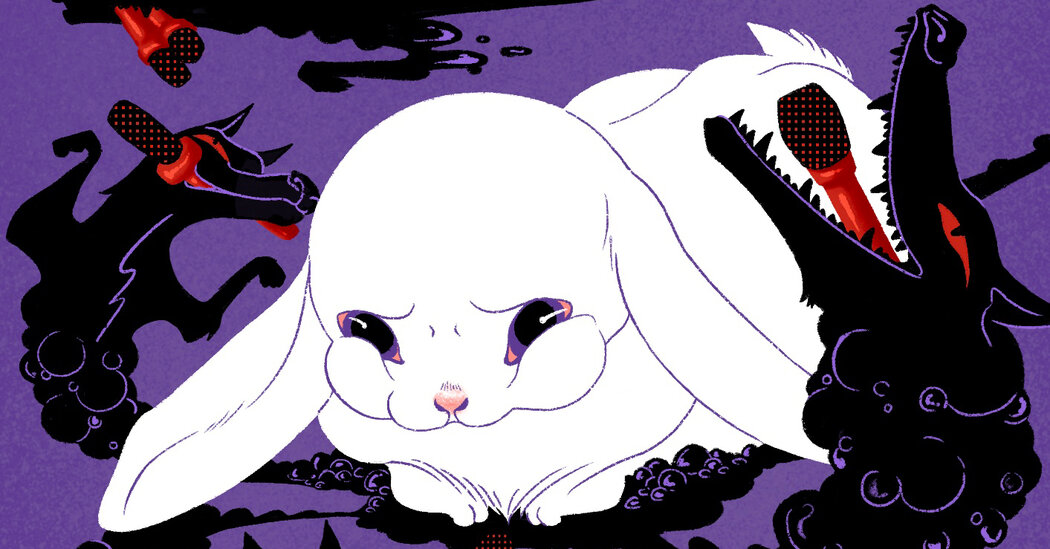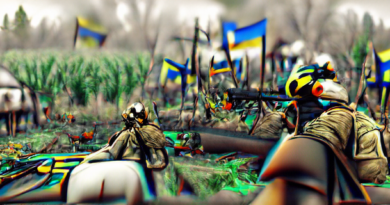‘Crisis Actors’? Where Have I Heard That Before?

Times Insider explains who we are and what we do, and delivers behind-the-scenes insights into how our journalism comes together.
After being condemned around the world for bombing a maternity hospital in Mariupol, Ukraine, Russia advanced a bogus conspiracy theory last month that was chillingly familiar to me.
Using unrelated images from social media, dodgy “reports” and constant repetition, the Russian Defense Ministry falsely claimed the airstrike was a “staged provocation” by Ukraine. The hospital, Russian officials falsely said, was nonoperational and a base for Ukrainian fighters. Moscow’s ambassador to the United Nations dismissed Associated Press photographs of the aftermath as “fake news,” and the Foreign Ministry alleged that bloodied, pregnant women evacuated from the rubble were crisis actors.
And so it has gone ever since. Ukrainian civilians killed while fleeing; found bound and shot in basements and mass graves or gunned down while standing in their front yards — all were cast by Russia as actors in a “hoax” aimed at bolstering Ukraine’s cause. An analysis by The Times rebuts claims by Russia that the bodies of those executed by the Russian army in Bucha, a town on the outskirts of Kyiv, were placed there after the Russian retreat.
Early in my career, I spent a decade as a correspondent in Eastern Europe, including three years in Russia. But it was because of my work for The Times over the last four years, covering the defamation lawsuits filed by the families of 10 Sandy Hook victims against the conspiracy broadcaster Alex Jones of Infowars, that Moscow’s lies have resonated most strongly.
Mr. Jones is a longtime fan of Vladimir V. Putin, a former regular on RT, the Russian state-funded TV outlet currently amplifying Kremlin lies about Ukraine. Infowars has pushed Moscow’s bogus narratives and fabulist conspiracies, including that America operates “bio-labs” in Ukraine, and that Russian attacks on Ukrainian civilians are staged by Ukraine.
For years, Mr. Jones lied in saying that the Dec. 14, 2012, shooting that killed 20 first graders and six educators at Sandy Hook Elementary School in Newtown, Conn., was a hoax staged by the federal government and he labeled individual parents as “actors.”
The term “crisis actors,” used by Sandy Hook fabulists to mean people pretending to be victims or survivors of the massacre, was used after the Sandy Hook shooting by James Tracy, a Florida Atlantic University professor and Infowars guest whose side hustle as a conspiracy blogger cost him his job. Some believers of Infowars’ lies about Sandy Hook have tormented the relatives of the victims ever since. Late last year, Mr. Jones lost four defamation lawsuits filed in Texas and Connecticut by victims’ families because he had repeatedly failed to produce court-ordered documents and testimony; juries will next decide how much he must pay the families in damages. Last week, days before those trials were to begin, Infowars filed for Chapter 11 protection, delaying the trials. In addition, his role in organizing “Stop the Steal” events is under scrutiny by the House committee investigating the Jan. 6 insurrection.
It’s impossible to know whether Russia studied the language used in this particular conspiracy theory before spreading lies around its invasion of Ukraine. But the similarity is eerie. Russia has long used incidents of American gun violence to support its propagandistic claims of cultural superiority. Now, during this war, the Kremlin is adopting the language of American mass shooting deniers to deny towering evidence of its army’s atrocities in Ukraine, including calling injured and killed Ukrainians crisis actors.
In 2018, Elisabeth Bumiller, The Times’s Washington bureau chief and my editor, agreed that the Sandy Hook lawsuits reflected the era. The families seek society’s verdict, I wrote, “on ‘post truth’ culture in which widely disseminated lies damage lives and destroy reputations, yet those who spread them are seldom held accountable.”
In my recent book, “Sandy Hook: An American Tragedy and the Battle for Truth,” I wrote that the Sandy Hook conspiracy theories — once believed to be true by one-quarter of Americans — foretold the world of delusion that we live in today. Through my reporting, I traced the through line from Sandy Hook to Pizzagate; to QAnon, and its claims that Democrats were trafficking children; to antisemitic tropes invoked by neo-Nazi marchers in Charlottesville; to coronavirus myths; and to the 2020 election lie that fomented the Jan. 6 Capitol riot. And now, to the war in Ukraine.
The Sandy Hook School Massacre
Lenny Pozner, father of Noah, the youngest of the Sandy Hook victims, predicted this spread of disinformation during my earliest interviews with him in 2018. Mr. Pozner is a technology expert who, through his nonprofit, the HONR Network, protects the victims of online abuse. He was the first relative of a Sandy Hook victim to confront the conspiracy theorists, convinced that their falsehoods represented a broader threat. Mr. Pozner, who was born in a former Soviet republic, said he was unsurprised when Russia dismissed evidence of its actions in Ukraine with words similar to those Mr. Jones used to deny Noah’s death.
My first close experience with wartime disinformation was during the Balkan wars of the 1990s. In Belgrade, a Serbian foreign ministry official gave me an armload of books, all of them falsely claiming that victims of the region’s genocidal wars had fabricated evidence of atrocities or committed the crimes themselves.
But today, as I watch Russia spread disinformation about the war in Ukraine with terms that developed in America, and then American conspiracy theorists regurgitating that disinformation, I’ve realized that those books are not the discredited relics I imagined they would be.


